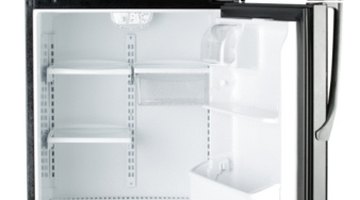How to Store Freon
Freon is a common refrigerant used in many air conditioners and refrigerators. It falls under federal Hazardous Materials and Compressed Gases guidelines and is therefore subject to a range of Occupational Safety and Health Administration and Environmental Protection Agency regulations.

Things You Will Need
- Federally approved containers
- Federally approved storage facilities
- License to handle freon
Handling and transporting freon should only be done by licensed individuals or companies. Whether in gas or liquid form, the freon must be stored in federally approved containers and facilities. Freon in old appliances should be removed by a licensed contractor and can be recycled under EPA guidelines.
-
Store freon cylinders upright, according to DuPont, the manufacturer. Ensure containers are secured during storage and transportation so they do not fall over or get knocked down.
-
Store cylinders containing freon in well-ventilated areas where temperatures do not exceed 125 degrees Fahrenheit. Ensure containers do not come into contact with corrosive or combustible materials during storage.
-
Ensure all cylinders of stored freon have OSHA-approved pressure release devices to avoid combustion or explosions.
-
Perform regular visual inspections of the stored compressed freon gas cylinders to ensure they meet federal Hazardous Materials Regulations, according to OSHA standard 1910.101 (Compressed Gases).
Warning
Do not inhale freon vapors, it can be fatal. Do not allow skin to come into contact with liquid freon, as it can cause frostbite. If freon comes into contact with eyes or skin, flush with water for at least fifteen minutes and contact your physician.
Do not expose freon vapors to open flame.
References
Resources
Writer Bio
As a national security analyst for the U.S. government, Molly Thompson wrote extensively for classified USG publications. Thompson established and runs a strategic analysis company, is a professional genealogist and participates in numerous community organizations.Thompson holds degrees from Wellesley and Georgetown in psychology, political science and international relations.
Photo Credits
- PhotoObjects.net/PhotoObjects.net/Getty Images
- PhotoObjects.net/PhotoObjects.net/Getty Images
More Articles
- What Is a Nitrogen Compressed Fire Extinguisher?
- How to Thaw a Steak in a Toaster Oven
- The Specifications of a Yamaha EF1600 Generator
- How to Remove the Back Filter Cover From a Kenmore Progressive Canister Vacuum Cleaner
- Magnavox TV Closed Caption Troubleshooting
- Definition of Chemical Pest Control



